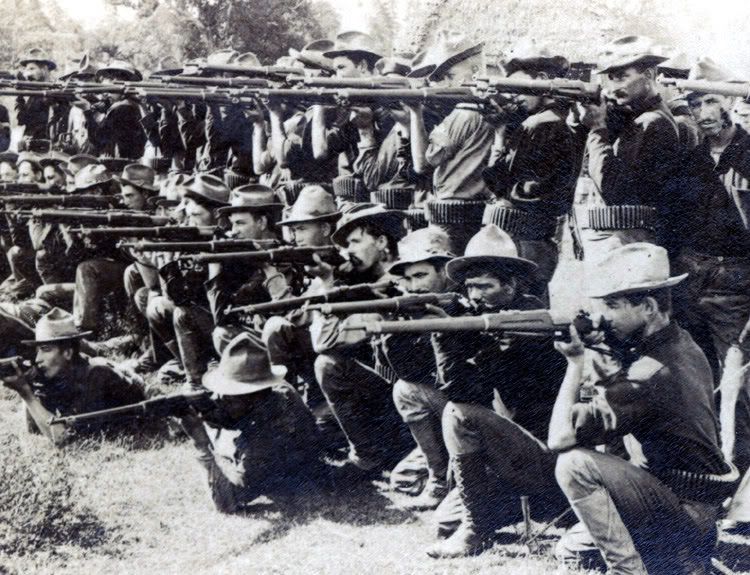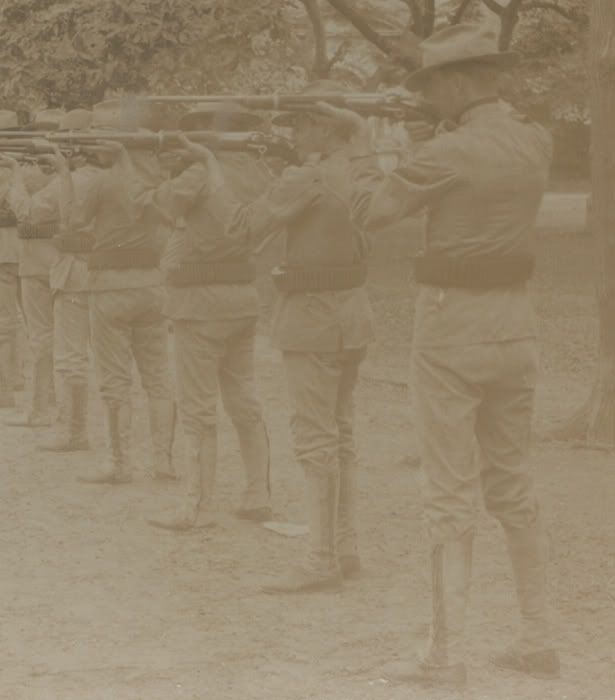deanglen
My Mail is Forwarded Here
- Messages
- 3,159
- Location
- Fenton, Michigan, USA
I know this is a picture of Span-Am War era troops, but it might apply to the US Military of following eras, perhaps even WWII. Somebody I showed these pictures to wondered why they were holding the rifle with their left hands under the rifle so close to the trigger area, standing or kneeling. Since I don't have a rifle or training in firing one, it got me wondering as to why they did hold it as they did. Is it an old fashioned style? It is a poor way to hold the rifle, or a superior style? Is there a name for that postion beyond "kneeling" and aiming. I figured some of our military guys could share what they know about this. Thanks for your interest!

dean

dean

